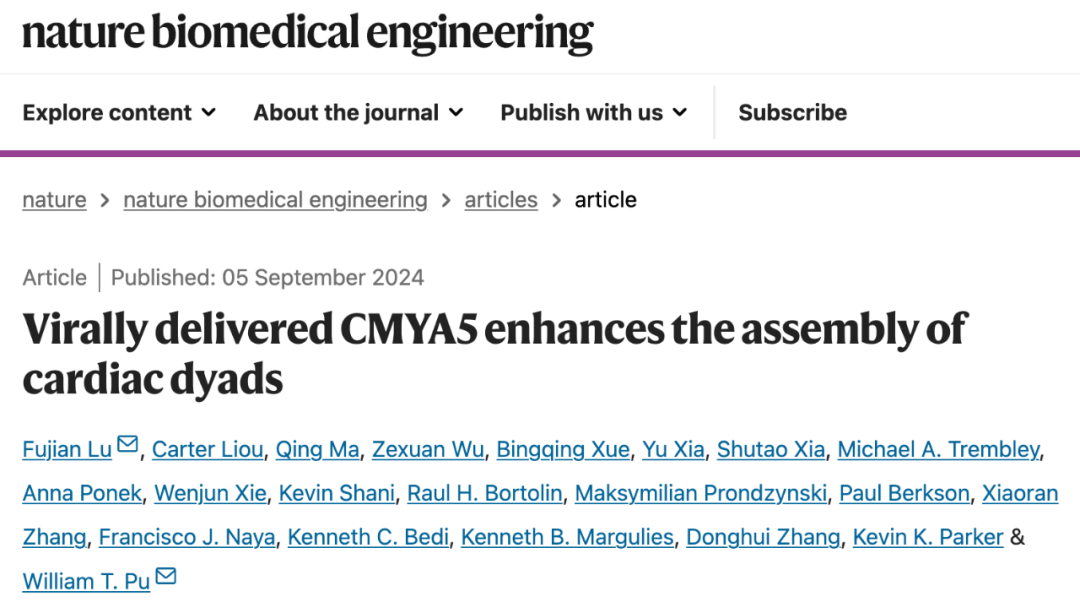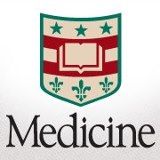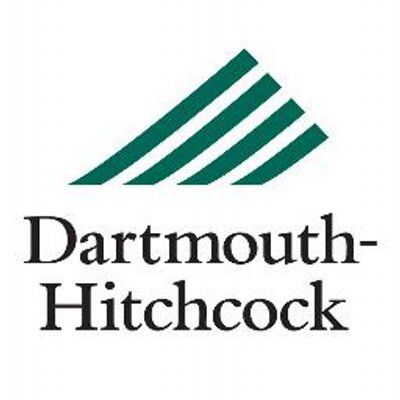预约演示
更新于:2025-05-07
RYR2
更新于:2025-05-07
基本信息
别名 arrhythmogenic right ventricular dysplasia 2、ARVC2、ARVD2 + [9] |
简介 Cytosolic calcium-activated calcium channel that mediates the release of Ca(2+) from the sarcoplasmic reticulum into the cytosol and thereby plays a key role in triggering cardiac muscle contraction. Aberrant channel activation can lead to cardiac arrhythmia. In cardiac myocytes, calcium release is triggered by increased Ca(2+) cytosolic levels due to activation of the L-type calcium channel CACNA1C. The calcium channel activity is modulated by formation of heterotetramers with RYR3. Required for cellular calcium ion homeostasis. Required for embryonic heart development. |
关联
11
项与 RYR2 相关的药物作用机制 RYR1调节剂 [+3] |
在研机构 |
非在研适应症- |
最高研发阶段批准上市 |
首次获批国家/地区- |
首次获批日期1800-01-20 |
作用机制 RYR1调节剂 [+1] |
在研机构- |
原研机构- |
在研适应症 |
非在研适应症- |
最高研发阶段批准上市 |
首次获批国家/地区- |
首次获批日期1800-01-20 |
作用机制 钾离子通道阻滞剂 [+3] |
原研机构 |
最高研发阶段临床2期 |
首次获批国家/地区- |
首次获批日期1800-01-20 |
66
项与 RYR2 相关的临床试验CTRI/2024/11/076183
Comparative evaluation of tetracaine based light-cured anaesthetic gel with commercially available topical anesthetics for stainless steel crown procedures in pulpectomized primary molars: A randomized clinical trial. - NIL
开始日期2024-11-07 |
申办/合作机构- |
NCT05917119
Bright Light Therapy for Residual Daytime Symptoms Associated With Obstructive Sleep Apnea
Persistent daytime symptoms of sleepiness in individuals with obstructive sleep apnea (OSA) who are using Continuous Positive Airway Pressure (CPAP) are associated with adverse long term medical and functional outcomes. Supplementary exposure to bright light has beneficial effects on sleep quality and daytime vigilance in healthy individuals and it has been increasingly applied in a variety of sleep and neuropsychiatric conditions. This study will explore the role of Bright Light Therapy (BLT), a well-established non-pharmacological intervention for circadian disturbances, for the treatment of residual daytime symptoms of OSA which do not respond to CPAP. BLT will be delivered via therapy glasses in a cross-over design, where each participant will be exposed to active treatment and sham treatment (4 weeks in each arm) in a randomized order. The hypothesis is that participants will demonstrate improvements in the variables of interest during the four-week active treatment portion of the eight-week crossover study, compared to the four-week sham treatment portion.
开始日期2024-10-26 |
NCT06569537
Comparison of Compounded Topical Anesthetics for Pain Relief of Intense Pulsed Light, Pulse Dye Laser, and Microneedling Treatments
The primary objective for this pilot study is to evaluate the efficacy of the compounded topical anesthetic Benzocaine 20%/ Lidocaine 8%/Tetracaine 4% (BLT) compared to 4% Lidocaine topical in providing relief of pain during IPL, PDL, and microneedling procedures.
开始日期2024-10-22 |
100 项与 RYR2 相关的临床结果
登录后查看更多信息
100 项与 RYR2 相关的转化医学
登录后查看更多信息
0 项与 RYR2 相关的专利(医药)
登录后查看更多信息
2,604
项与 RYR2 相关的文献(医药)2025-06-01·Cell Calcium
H2S treatment reverts cardiac hypertrophy and increases SERCA2a activity but does not fully restore cardiac Ca2+ handling in hypertensive rats
Article
作者: Altamirano, Julio ; Centurión, David ; Huerta de la Cruz, Saúl ; Ávila, Guillermo ; Rojo, Rocio ; Gómez-Viquez, Norma Leticia ; Chimal, Luis ; Cruz-Robles, David ; Aranda, Alberto ; Medina-Terol, Grecia J
2025-05-05·Journal of General Physiology
Novel Ca2+ wave mechanisms in cardiac myocytes revealed by multiscale Ca2+ release model
Article
作者: Vysma, Morris ; Welsh, James S. ; Laver, Derek R.
2025-05-01·International Immunopharmacology
GTS-21 alleviates sepsis-induced atrial fibrillation susceptibility by modulating macrophage polarization and Neuregulin-1 secretion
Article
作者: Wan, Cancan ; Li, Shunyi ; Zhou, Jiabao ; Liu, Qiming ; Li, Fanqi ; Tu, Tao ; Zhang, Zixi ; Zhu, Jiayi ; Zhang, Yusha ; Lin, Qiuzhen ; Tan, Siyuan ; Wu, Keke ; Zeng, Gaoming ; Zhou, Yong ; Ma, Yingxu
10
项与 RYR2 相关的新闻(医药)2024-10-09
慢病毒是以HIV-1为基础改造而来的一种病毒载体。在数十年的应用中,慢病毒载体的生物安全性和有效性不断被提升,目前已经成为体内外生物实验中一种功能非常强大的基因递送工具。
在基因递送方面,慢病毒载体拥有诸多独特的优势:稳定持久表达、可感染多种类型细胞、可携带大片段基因、免疫原性比较低等。无论是基础科研还是临床应用,慢病毒载体都具有非常广泛的应用前景。
慢病毒的应用场景
目前慢病毒载体主要应用在以下几个方面:
细胞基因治疗(截止目前,已上市的CAR-T产品有9款采用了慢病毒载体递送CAR基因)
基因表达调控(过表达、RNA干扰研究等)
基因编辑(CRlSPR/Cas9 gRNA文库筛选、基因敲除、敲入、点突变、基因激活/抑制)
稳转细胞株构建
活体细胞成像追踪
转基因动物
图1 慢病毒载体的主要应用方向
应用案例
案例1:用慢病毒载体进行基因过表达,构建稳转细胞株,研究葡萄糖激酶在前列腺癌(PCa)中的作用1
细胞代谢在肿瘤进展中起着关键作用,靶向癌症代谢可能有效地杀死癌细胞。本文旨在研究葡萄糖激酶在前列腺癌中的作用,并确定PCa治疗的关键靶点。
实验设计和主要研究结果:
癌症基因组图谱(TCGA)数据库和在线工具评估结果显示ADP依赖型葡萄糖激酶(ADPGK)是唯一一种在前列腺腺癌(PRAD)中上调并预测较差总生存(OS)的葡萄糖激酶。临床样本分析显示,与非PCa组织相比,ADPGK在PCa组织中显著上调。
ADPGK过表达促进了PCa细胞的增殖和迁移,而敲低ADPGK则抑制了恶性表型。
代谢组学、蛋白质组学以及ECAR和OCR测试揭示了ADPGK显著加速了PCa的糖酵解。
ADPGK与丙酮酸激酶C(ALDOC)结合,通过AMP激活蛋白激酶(AMPK)磷酸化促进糖酵解。
图2 用于ADPGK过表达的慢病毒结构示意图及ADPGK过表达结果。
案例2:用慢病毒载体递送RNA干扰工具,研究脯氨酸羟化酶结构域蛋白在调节心肌细胞钙水平中的功能2
由于高氧消耗,心肌细胞对环境中的氧气极为敏感。脯氨酸羟化酶结构域蛋白2(PHD2)是一种氧气传感器,对细胞缺氧适应性至关重要。近年来的研究发现,PHD抑制剂(PHIs)和针对PHD2的小干扰RNA(PHD2shRNA)可以在不影响细胞能量水平的情况下激活AMPK,将细胞缺氧信号转化为能量代谢信号,使细胞产生能量保护反应,并显著提高细胞对缺氧的抵抗力。研究还发现,信号分子钙(Ca2+)在响应缺氧的AMPK信号通路激活中发挥着重要作用。然而,PHD活性如何增加细胞内Ca2+水平并激活AMPK信号通路的分子机制仍然不清楚。
实验设计和主要研究结果:
确认PHIs 诱导心肌细胞中的钙释放。
PHD2 在心肌细胞中激活肌浆网通道辅助蛋白 CaMKⅡ。用shRNA干扰技术敲低心肌细胞中PHD2,Western blot证实了PHD2的沉默。与对照细胞相比,沉默PHD2显著增加了CaMKⅡ的磷酸化。
Ca2+ 在心肌细胞中介导 PHI 刺激引起的 AMPK 激活。肌浆网通道抑制剂瑞安诺丁显著降低了PHI处理诱导的与Ca2+相关的荧光强度。慢病毒介导的RyR2特异性shRNA显著降低了RyR2在mRNA水平上的表达。此外, IP3R阻断剂2-APB预处理或慢病毒介导的IP3R特异性shRNA均未显著影响PHI处理诱导的P-AMPK水平。2-APB预处理对PHI诱导的Ca2+荧光也无显著影响。这些结果表明,PHI诱导的钙释放和AMPK激活主要由肌浆网通道而非IP3R通道调节。
CaMKⅡ介导PHI诱导的钙释放和AMPK激活。PKA不参与PHI/Ca2+/AMPK信号通路,而CaMKⅡ在PHI/Ca2+/AMPK信号通路中发挥着重要作用。
TRPA1介导PHI/Ca2+/AMPK信号通路的激活。TRPA1抑制剂HC030031预处理显著抑制了PHI诱导的P-AMPK和P-CaMKⅡ增加,并显著减少了PHI诱导的Ca2+荧光。PHD2 shRNA组中TRPA1蛋白水平显著高于对照组。这些结果强烈表明TRPA1在PHD诱导的Ca2+释放途径中发挥着至关重要的作用。
图3 慢病毒介导的特异性shRNA对 PHD2、RyR2和IP3R的敲低效果。
案例3:用慢病毒介导的基因编辑技术研究穿透内耳血迷路屏障(BLB)的靶点3
内耳疾病是一种导致全球超过 15 亿人听力丧失的疾病。然而,内耳毛细血管表面存在血迷路屏障(BLB),由于渗透性低,限制了大多数药物化合物从血流进入内耳组织,极大地阻碍了全身药物预防和干预的有效性。本研究报告了一种在 BLB 上表达的新型受体低密度脂蛋白受体相关蛋白 1 (LRP1),它可以作为穿梭治疗药物跨越这一屏障的潜在靶标。
实验设计和主要研究结果:
LRP1在小鼠和猪的耳蜗细胞中广泛表达,尤其在BLB区域和目标细胞中。
通过靶向LRP1的配体肽IETP2,可以将不同的小分子如荧光染料、抗氧化药物和MRI造影剂等传递到内耳。这表明LRP1可能是一个有效的靶点,用于开发非侵入性和针对性的药物递送策略,以提高内耳疾病的治疗效果。
LRP1在细胞内吞作用中也起着关键作用。研究表明,IETP2肽与LRP1结合后可以被LRP1阳性细胞内化,并且这种内吞作用依赖于LRP1的表达。通过使用CRISPR/Cas9技术敲低LRP1基因,进一步证实了LRP1在IETP2内吞中的关键作用。
这些发现为开发新的治疗策略提供了重要的基础,可能有助于未来内耳疾病的诊断和治疗。通过利用LRP1的介导作用,研究人员可以探索将治疗药物更有效地传递到内耳,从而提高治疗效果并减少副作用。
图4 用于敲低LRP1的慢病毒载体结构和sgRNA。
图5 LRP1的敲低效果。
派真生物有幸为以上三项研究提供慢病毒。
案例4:慢病毒递送高灵敏度的报告基因Akaluc用于追踪胶质瘤的体内生长、侵袭和转移过程4
使用非侵入性生物发光成像(BLI)对肿瘤生长进行纵向追踪是研究体内癌症模型的关键方法。Akaluciferase(Akaluc)是一种新的BLI系统,其信号强度高于标准的萤火虫荧光素酶(Fluc)。本文设计了一种慢病毒载体,用于在胶质瘤细胞系中表达Akaluc,追踪胶质瘤的体内扩张过程。
实验设计和主要研究结果:
Akaluc和Fluc报告基因的设计和灵敏度比较。用表达Venus-Akaluc或Venus-Fluc融合蛋白的慢病毒载体转导人GBM细胞系U87MG和小鼠高级别胶质瘤细胞系GL261,结果显示病毒载体转导对胶质瘤细胞的增殖率没有显著影响,表达Akaluc的细胞比表达Fluc的细胞的BLI信号强大约10倍。
颅内移植表达Akaluc的胶质瘤细胞产生超过Fluc 100倍的BLI信号。将GL261-Venus-Akaluc和GL261-MSCV-Fluc胶质瘤细胞颅内植入到同系的C57BL/6小鼠中,在所有时间点,Venus-Akaluc组的BLI信号显著高于GL261-Fluc组。
Akaluc BLI系统可以追踪更少数量的移植胶质瘤细胞,从而有助于更准确地模拟肿瘤发生和早期肿瘤生长。
Akaluc BLI系统可用于在体内对胶质瘤治疗反应进行纵向追踪。
总之,Akaluc BLI提供了一种敏感的方法用于体内追踪胶质瘤生长、侵袭和转移,特别适用于对较小的肿瘤进行成像以及监测治疗后的肿瘤复发。
图6 用于递送Akaluc BLI系统的慢病毒载体结构示意图以及Akaluc BLI系统体内示踪效果。
派真生物可提供表达Akaluc的慢病毒。
参考资料:
https://doi.org/10.1186/s40779-023-00500-9
https://doi.org/10.1016/j.yexcr.2021.112777
https://www.nature.com/articles/s41392-022-00995-z
https://doi.org/10.1007/s00259-021-05439-4
关于派真生物
细胞疗法免疫疗法
2024-09-07
·生物谷
miniCMYA5技术成为首个通过基因操纵促进hiPSC-CM结构和功能成熟的手段。
复旦大学生物医学研究院、复旦大学附属中山医院心内科上海心研所路福建研究员和哈佛医学院波士顿儿童医院William Pu教授团队在 Nature Biomedical Engineering 期刊发表了题为:Virally delivered CMYA5 enhances the assembly of cardiac dyads 的研究论文。
该研究揭示了心力衰竭的重要致病机制——CMYA5表达水平降低,并开发了一种可通过腺相关病毒(AAV)载体递送的微型化CMYA5蛋白(miniCMYA5)。心脏特异性表达miniCMYA5稳固了dyad的结构,显著改善心脏功能,并在hiPSC-CM中启动了dyad的组装,为心力衰竭的治疗和hiPSC-CM的体外成熟提供了新方法。
在之前的研究中,研究团队使用生物素介导的邻近蛋白质组学标记技术(BioID),在活体、原位成功捕获了位于dyad空间的蛋白质组,发现了新型dyad蛋白CMYA5是调控jSR定位于Z线(dyad组装的早期和关键步骤)的重要分子。CMYA5缺失破坏了dyad结构、dyad在Z线上的定位以及jSR 的Ca2+释放,导致心力衰竭和对压力超载应激的不耐受。通过检测主动脉缩窄术(transverse aortic constriction,TAC)后小鼠和扩张型心肌病患者的心脏样本发现, CMYA5转录水平和定位正常,但与RYR2互作的CMYA5蛋白水平显著下调,成为心力衰竭中dyad结构破坏的重要因素。因此,增强CMYA5蛋白表达可能有助于保护dyad结构,抵抗和治疗心力衰竭。
AAV是主要的活体心脏基因递送载体, 但其容量有限(~4.7 kb),无法用于表达全长的CMYA5(长达11.2 kb)。为此,研究团队设计了一种可以通过AAV递送的CMYA5衍生物,分析不同物种中CMYA5氨基酸的保守性发现,N端(78-319,NT)和C端(2731-3739,MD9)高度保守。免疫荧光和免疫共沉淀实验表明,NT负责CMYA5的Z线定位,而MD9负责与RYR2的互作。在CMYA5 缺失的心肌细胞中,NT和MD9单独均无法恢复RYR2的定位。相反地,研究团队将NT融合到 MD9后,产生了足够小、AAV可装载的微型化蛋白——miniCMYA5,能够定位于Z线并与RYR2互作,在缺失CMYA5的细胞中恢复了RYR2的定位。进一步功能评估表明,miniCMYA5能有效替代全长 CMYA5,修复由于CMYA5缺失引起的dyad组装、Z线定位和心脏功能方面的紊乱。
在随后的实验中,研究团队采用两套方案测试AAV-miniCMYA5的治疗潜力:一是在新生小鼠注射全剂量AAV,成年后进行TAC手术,测试其抵抗心力衰竭的能力;二是对成年鼠进行TAC手术建立心力衰竭模型后进行AAV注射,验证治疗效果。通过超声心动图监测心脏功能、组织原位成像、免疫组化分析以及对单个心肌细胞进行收缩力和钙成像等操作,全面评估基因治疗效果。结果显示,通过 AAV-miniCMYA5增强CMYA5活性能稳定dyad结构,纠正异常的Ca2+释放,缓解心肌肥厚和功能障碍。与以往基于Junctophilin2 和Bin1的治疗策略相比,miniCMYA5展现出了更为优越的效果,是一种更具潜力的新型治疗心力衰竭的手段。
最后,对体外分化的iPSC-CM和健康供体的成熟心肌进行对比分析发现, CMYA5及其互作蛋白在转录和蛋白水平的缺失,可能是hiPSC-CM结构不成熟的重要因素。结合细胞微图案(micropattern)和工程化人源心肌组织(engineered heart tissue,EHT)技术,在hiPSC-CM中表达miniCMYA5促进了RYR2/jSR与Z线的对齐,增加了钙释放的同步性和钙瞬变的幅度,同时提高了EHT的收缩力。miniCMYA5技术成为首个通过基因操纵促进hiPSC-CM结构和功能成熟的手段。
复旦大学路福建研究员为该论文第一作者和共同通讯作者,波士顿儿童医院William Pu教授为论文共同通讯作者。此外,该研究还得到了中山大学吴泽璇博士,湖北大学张冬卉教授课题组,西安交通大学谢文俊教授,波士顿大学 Francisco Naya教授,宾夕法尼亚大学Kenneth Margulies教授课题组,哈佛大学Kit Parker教授课题组,加拿大卡尔加里大学Wayne Chen教授的帮助和支持。

2024-09-06
·生物探索
引言
在成熟的心肌细胞中,高效的兴奋-收缩偶联(excitation-contraction coupling,ECC)依赖于结构和功能完整的二联体 (dyad) 单元:由横管(T-tubule)和连接型肌浆网(junctional sarcoplasmic reticulum,jSR)偶联在Z线形成规则排列的纳米级结构。T-tubule 为心肌细胞质膜的管状凹陷,膜上分布着电压敏感型钙通道;jSR 是富含 Ca2+释放通道RYR2 (Ryanodine Receptor 2) 的肌浆网特殊区域。dyad紧密地将电活动与Ca2+释放和心肌收缩联系在一起,其结构异常和功能紊乱直接导致ECC缺陷,是源于不同病因心力衰竭患者的共同特征。人源诱导型多能干细胞分化的心肌细胞(human induced pluripotent stem cell-derived cardiomyocytes,hiPSC-CMs)未能形成dyad,这限制了其在疾病建模和组织修复中的应用。因此,促进dyad的组装和稳定的方法有望保护心脏免受重塑和心力衰竭的影响,并提高hiPSC-CMs的研究和治疗潜力。
2024年9月5日,复旦大学生物医学研究院、附属中山医院心内科上海心研所的路福建研究员和哈佛医学院波士顿儿童医院William Pu教授在Nature Biomedical Engineering上发表题为Virally delivered CMYA5 enhances the assembly of cardiac dyads的研究论文。该研究揭示了心力衰竭的重要致病机制—CMYA5表达水平降低,并发明了一种可通过腺相关病毒(AAV)载体递送的微型化CMYA5蛋白(miniCMYA5)。心脏特异性表达miniCMYA5稳固了dyad的结构,显著改善心脏功能,并在hiPSC-CMs中启动了dyad的组装,为心力衰竭的治疗和hiPSC-CMs的体外成熟提供了新方法。
在先前的研究中,研究人员使用生物素介导的邻近蛋白质组学标记技术(BioID),在活体、原位成功捕获了位于dyad空间的蛋白质组(Lu, F., Ma, Q., Xie, W. et al. CMYA5 establishes cardiac dyad architecture and positioning. Nat Commun 13, 2185 (2022). https://doi.org/10.1038/s41467-022-29902-4),发现了新型dyad蛋白CMYA5是调控jSR定位于Z线(dyad组装的早期和关键步骤)的重要分子。CMYA5缺失破坏了dyad结构、dyad在Z线上的定位以及jSR 的Ca2+释放,导致心力衰竭和对压力超载应激的不耐受。通过检测主动脉缩窄术(transverse aortic constriction, TAC)后小鼠和扩张型心肌病患者的心脏样本发现, CMYA5转录水平和定位正常,但与RYR2互作的CMYA5蛋白水平显著下调,成为心力衰竭中dyad结构破坏的重要因素。因此,增强CMYA5蛋白表达可能有助于保护dyad结构,抵抗和治疗心力衰竭。
AAV是主要的活体心脏基因递送载体, 但其容量有限(~4.7 kb),无法用于表达全长的CMYA5(11.2 kb)。为此,研究人员设计了一种可以通过AAV递送的CMYA5衍生物,分析不同物种中CMYA5氨基酸的保守性发现,N端(78-319,NT)和C端(2731-3739,MD9)高度保守。免疫荧光和免疫共沉淀实验表明,NT负责CMYA5的Z线定位,而MD9负责与RYR2的互作。在CMYA5 缺失的心肌细胞中,NT和MD9单独均无法恢复RYR2的定位。相反地,研究人员将 NT 融合到 MD9后,产生了足够小、AAV可装载的微型化蛋白 miniCMYA5,能够定位于Z线并与RYR2互作,在缺失CMYA5的细胞中恢复了RYR2的定位。进一步功能评估表明,miniCMYA5能有效替代全长 CMYA5,修复由于CMYA5缺失引起的dyad组装、Z线定位和心脏功能方面的紊乱。
在随后的实验中,研究人员采用两套方案测试AAV-miniCMYA5的治疗潜力:一是在新生小鼠注射全剂量AAV,成年后进行TAC手术,测试其抵抗心力衰竭的能力;二是对成年鼠进行TAC手术建立心力衰竭模型后进行AAV注射,验证治疗效果。通过超声心动图监测心脏功能、组织原位成像、免疫组化分析以及对单个心肌细胞进行收缩力和钙成像等操作,全面评估基因治疗效果。结果显示,通过 AAV-miniCMYA5增强CMYA5活性能稳定dyad结构,纠正异常的Ca2+释放,缓解心肌肥厚和功能障碍。与以往基于Junctophilin2 和Bin1的治疗策略相比,miniCMYA5展现出了更为优越的效果,是一种更具潜力的新型治疗心力衰竭的手段。
最后,对体外分化的iPSC-CMs和健康供体的成熟心肌进行对比分析发现, CMYA5及其互作蛋白在转录和蛋白水平的缺失,可能是hiPSC-CMs结构不成熟的重要因素。结合细胞微图案(micropattern)和工程化人源心肌组织(engineered heart tissue,EHT)技术,在hiPSC-CMs中表达miniCMYA5促进了RYR2/jSR与Z线的对齐,增加了钙释放的同步性和钙瞬变的幅度,同时提高了EHT的收缩力。miniCMYA5技术成为首个通过基因操纵促进hiPSC-CMs结构和功能成熟的手段。
参考文献
https://www.nature.com/articles/s41551-024-01253-z
责编|探索君
排版|探索君
文章来源|“BioArt”
End
往期精选
围观
一文读透细胞死亡(Cell Death) | 24年Cell重磅综述(长文收藏版)
热文
Cell | 是什么决定了细胞的大小?
热文
Nature | 2024年值得关注的七项技术
热文
Nature | 自身免疫性疾病能被治愈吗?科学家们终于看到了希望
热文
CRISPR技术进化史 | 24年Cell综述
细胞疗法临床研究
分析
对领域进行一次全面的分析。
登录
或

生物医药百科问答
全新生物医药AI Agent 覆盖科研全链路,让突破性发现快人一步
立即开始免费试用!
智慧芽新药情报库是智慧芽专为生命科学人士构建的基于AI的创新药情报平台,助您全方位提升您的研发与决策效率。
立即开始数据试用!
智慧芽新药库数据也通过智慧芽数据服务平台,以API或者数据包形式对外开放,助您更加充分利用智慧芽新药情报信息。
生物序列数据库
生物药研发创新
免费使用
化学结构数据库
小分子化药研发创新
免费使用


